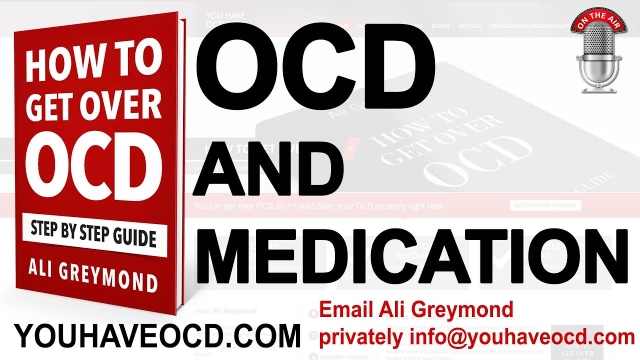Living with obsessive-compulsive disorder (OCD) can be an overwhelming and distressing experience for individuals, especially teenagers. The constant intrusion of intrusive thoughts and the irresistible urge to carry out repetitive behaviors can significantly impact their daily lives, relationships, and overall well-being. However, it’s important to remember that effective treatment strategies exist to help manage and alleviate the symptoms of OCD, offering hope for a calmer and more fulfilling life.
Teen rehab centers specialized in OCD treatment are dedicated to providing comprehensive and tailored recovery programs for adolescents struggling with this mental health condition. These facilities understand the unique challenges that teens face and offer a safe and supportive environment for their journey towards recovery. By addressing both the physical and psychological aspects of OCD, rehab centers can equip teenagers with the necessary tools and coping mechanisms to regain control over their lives and find lasting relief.
Addiction recovery for teenagers with co-occurring OCD is another crucial aspect of treatment. Since substance abuse or addiction can often accompany OCD as a way to manage distressing symptoms, it is essential to address both conditions simultaneously for comprehensive healing. Through a combination of therapy, medication management, and holistic approaches, rehab centers aim to provide teenagers with the necessary support and resources to overcome their addiction while effectively managing their OCD.
In the following sections, we will delve into some of the most effective treatment strategies for OCD, exploring various therapeutic approaches, medications, and lifestyle adjustments that have shown promising results in helping teenagers find calm and reclaim their lives. Whether you are a teen struggling with OCD yourself or a concerned parent or caregiver, this article will serve as a valuable resource in gaining insights into the different options available and making informed decisions about OCD treatment for teenagers. Let’s now explore the path towards finding calm amidst the challenges of living with OCD.
###1. Understanding OCD: Symptoms and Diagnosis
OCD, or Obsessive-Compulsive Disorder, is a mental health condition that affects people of all ages, including teenagers. It is important to recognize the symptoms and diagnose OCD properly to provide effective treatment.

Individuals with OCD experience intrusive thoughts, images, or urges known as obsessions, which can be distressing and cause anxiety. These obsessions often lead to compulsions, repetitive behaviors or mental acts that are performed to alleviate the anxiety caused by the obsessions.
While it is normal for people to have occasional intrusive thoughts or engage in repetitive behaviors, individuals with OCD experience them to a much greater extent, to the point where it interferes with their daily lives. Common obsessions may include a fear of contamination, a need for symmetry or order, or intrusive forbidden thoughts. Compulsions often involve excessive handwashing, checking behaviors, or repeating certain actions.
To confirm an OCD diagnosis, mental health professionals will conduct a comprehensive evaluation. This may involve assessing the presence and nature of obsessions and compulsions, the impact these symptoms have on the individual’s life, and ruling out other possible causes. Collaboration between the individual, their parents, and healthcare providers is crucial in ensuring an accurate diagnosis and appropriate treatment plan.
Understanding the symptoms and diagnosis of OCD is the first step in finding effective treatment strategies for individuals, especially teenagers, who are struggling with this condition. Early detection and intervention can significantly improve their quality of life and overall well-being.
2. Effective Treatment Options for Teenagers
When it comes to finding effective OCD treatment for teenagers, there are several options worth considering. Each individual’s experience with OCD is unique, so it is important to explore different avenues to find the most suitable approach. Here are three treatment strategies that have shown promise in helping teenagers manage their OCD symptoms:
Cognitive-Behavioral Therapy (CBT): CBT is a widely recommended treatment for OCD in teenagers. This therapy focuses on helping individuals identify and challenge their obsessive thoughts and engage in behaviors that reduce anxiety and compulsions. Through regular sessions with a trained therapist, teenagers can learn techniques to reframe their thoughts and gradually confront their fears, leading to improved coping mechanisms.
ADHD treatment for teensExposure and Response Prevention (ERP) Therapy: ERP is a specific type of CBT that targets OCD symptoms directly. This therapy involves exposing teenagers to situations or thoughts that trigger their obsessions, without engaging in the corresponding compulsions. By repeatedly facing their fears, adolescents can gradually learn that their anxieties lessen over time, gaining control over their compulsive behaviors.
Medication: In some cases, medication may be prescribed alongside therapy to help manage OCD symptoms. Selective serotonin reuptake inhibitors (SSRIs) are commonly used to treat OCD in teenagers, as they can help regulate serotonin levels in the brain, reducing anxiety and obsessions. It is important for teenagers to work closely with a psychiatrist to find the right medication and dosage for their individual needs.
Finding the most effective treatment for teenagers with OCD often requires a combination of therapeutic methods tailored to the individual. By exploring these treatment options, teenagers can take positive steps towards finding calm and managing their OCD symptoms effectively. Remember, seeking professional help and support is crucial in ensuring the best outcomes for teenagers undergoing OCD treatment.
3. Supporting Long-Term Recovery: Aftercare and Preventive Measures
Recovery from OCD is a continuous journey that requires consistent support and preventive measures to ensure long-term success. After completing a teen rehab program, it’s important to have a robust aftercare plan in place. This plan should include regular check-ins with a therapist or counselor who specializes in OCD treatment. These professionals can provide ongoing guidance, counseling, and support to prevent relapse and address any challenges that may arise during the recovery process.
In addition to professional support, building a strong support network is crucial for maintaining long-term recovery. Teens who have successfully completed rehab can benefit from participating in support groups, where they can connect with others who have similar experiences and struggles. Sharing their stories, challenges, and successes in a judgment-free environment can provide a sense of belonging and help them feel understood and supported.
Furthermore, incorporating preventive measures into daily life can help to reduce the risk of relapse. This can include practicing self-care activities, such as exercise, meditation, and mindfulness techniques, which promote emotional well-being and stress reduction. It’s also important to identify and avoid triggers that may exacerbate OCD symptoms, such as certain situations, substances, or people. Learning healthy coping mechanisms to manage stress and anxiety is essential in preventing relapse and maintaining overall well-being.
By prioritizing aftercare and preventive measures, teens can increase their chances of sustaining long-term recovery from OCD. The ongoing support from professionals, participation in support groups, and implementation of preventive strategies empower teens to build a strong foundation for their future, free from the constraints of OCD and addiction.






Recent Comments